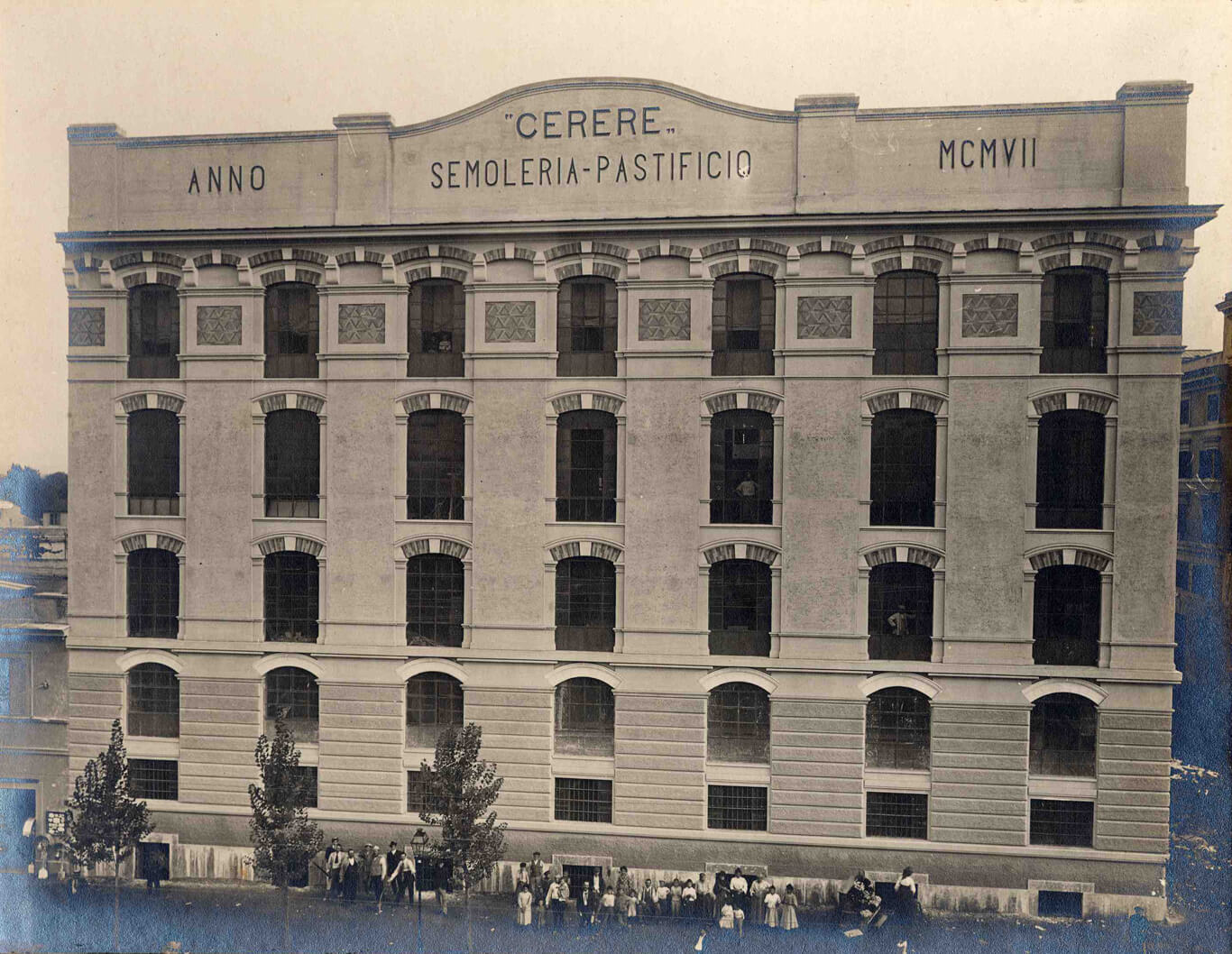Fondazione Pastificio Cerere was established in what was once the Pastificio Cerere, the oldest of the factories residing in the San Lorenzo neighbourhood. The factory, founded in 1905, provided pasta and flour to the Capital until 1960 and around a decade later, became a place of art.
The history of the Pastificio Cerere and its reconversion begins when the entrepreneur Felicina Ceci, owner of the building together with her sister Adriana, agreed to lease its rooms to some young artists. The first to settle a studio in it was Nunzio, who remembers having arrived there in 1973; later, artists like Bruno Ceccobelli, Gianni Dessì, Giuseppe Gallo, Pizzi Cannella and Marco Tirelli settled in the former factory. “When we arrived, we dismantled the machines, built walls and floors, we connected the water and lights, in short we turned an industrial space into a place where we could live and work.” [1]. This and many other memories, are a testament to how the building with its elevators, the big open spaces, and the ample windows, offered the artists ideal spaces for their studies. As a matter of fact, the new tenants gradually renovated its interior, while the common areas were not altered. Even after the general renovations, the memory of the industrial use of the Pastificio had not been cancelled and inside it people lived together, like they had been doing for centuries in Rome, with the archaeological traces deriving from its previous function.
In the summer of 1984, the critic Achille Bonito Oliva made the Pastificio famous with the exhibition: “Ateliers”. For the first time the places where the artists lived and worked were exceptionally opened to the public, artists that didn’t make up a homogeneous group adhering to a common poetics or language dogma, but who, belonging to the same generation, established a continuous contact and with it often deep friendships, a process facilitated by the architectural structure of the Pastificio with its contiguous workspaces and common meeting places.
Apart from the protagonists that is traditionally agreed being part of the Group of San Lorenzo [2], during the years the building has seen the coming and going of many different artists, then critics, intellectuals and representatives of the entertainment industry who all gravitated around this workshop which became a point of reference for culture, greatly overstepping the confines of the Capital. The ideology that the tenants of the building all shared is that of making, producing, the artists remember the existence of a common cultural land, inside which one might meet and have discussions with others: “In those years and in this place a generation of artists existed which put itself out in the world, that made its own experiences available to the others, discussed its own thoughts with the others. […] with the passing of time, each one of them chose their own path, although filled with common stories that are part of our lives”.[3]
In 2002 from the “Interno F.M.” exhibition, the idea of giving the Pastificio Cerere an expositive space dedicated to contemporary art and always open to the public was born. Flavio Misciattelli tells: “In 1998 I moved into one of the rooms of the Pastificio, property of my family, which then became my house until a few years ago. Since that day I came to know those artists who already lived and worked in the building, I came to appreciate them and collect them until I was able to organize an exhibition with them in my house. During that occasion more than five-hundred people were present and it was then that I realized how enthusiastic the interest in the Pastificio was”.
Thus, in 2005 the Fondazione Pastificio Cerere was born inaugurating its venue inside the building with the exhibition “RESIDENTI”.
Today, the former factory hosts artists studios, fashion ateliers, graphics and communication studios and the academy of art (RUFA – Rome University of Fine Arts).
Among the ateliers:Myriam B, Ottavio Celestino, Giovanni De Cataldo, Ileana Florescu, Rossella Fumasoni, Roberta Mariani, Meletios Meletiou, Michele Melotta, Nunzio, Leonardo Petrucci, Piero Pizzi Cannella, Pietro Ruffo, Andrea Stoger, Alessandro Valeri.
[1] Bruno Ceccobelli, in Italia Contemporanea, Officina San Lorenzo. Ceccobelli, Dessì, Gallo, Nunzio, Pizzi Cannella, Tirelli, a cura di Daniela Lancioni, Silvana Editoriale 2009.
[2] Bruno Ceccobelli, Gianni Dessì, Giuseppe Gallo, Pizzi Cannella, Nunzio e Marco Tirelli.
[3] Nunzio, in Italia Contemporanea, Officina San Lorenzo. Ceccobelli, Dessì, Gallo, Nunzio, Pizzi Cannella, Tirelli, a cura di Daniela Lancioni, Silvana Editoriale 2009.




